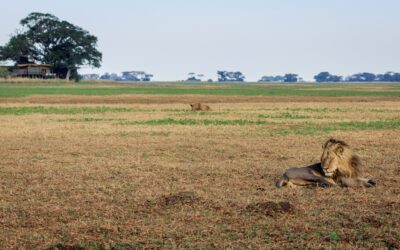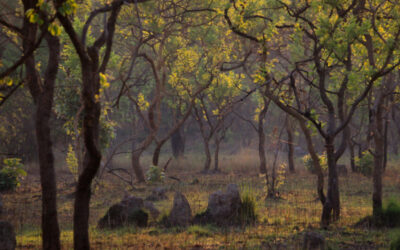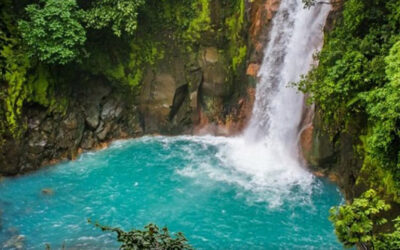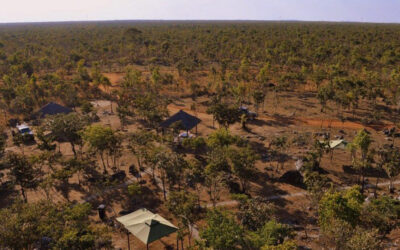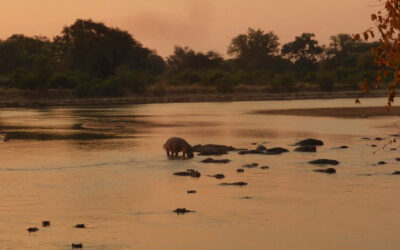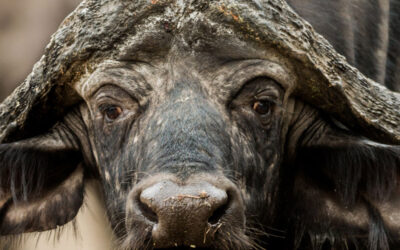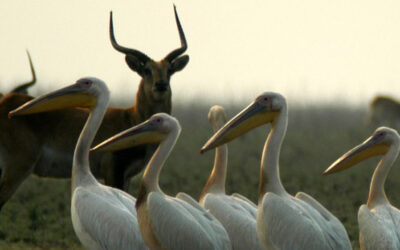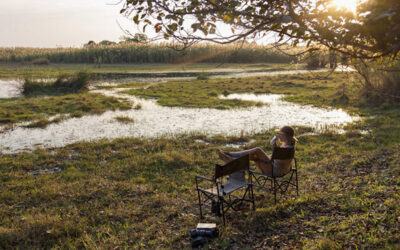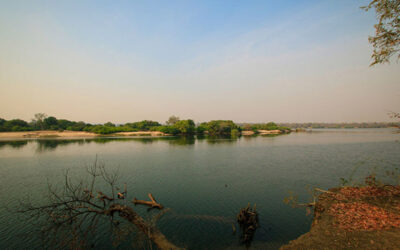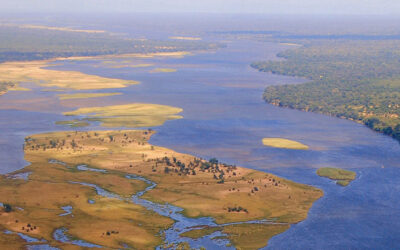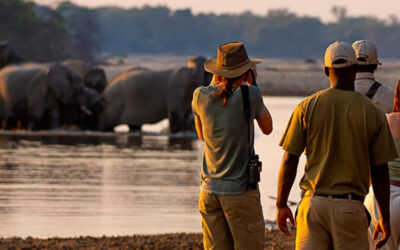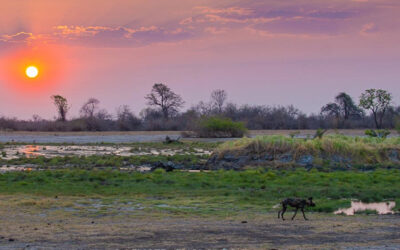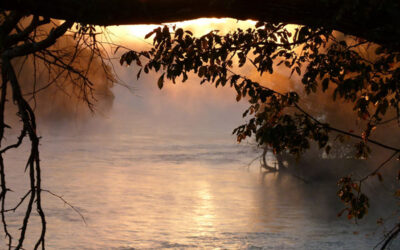Self drive Zambia – 4×4 rental, the freedom to explore.
Zambia and Botswana are the most exciting areas to visit for the Self-drive explorer.
Chobe4x4 provides our guests 4×4 Toyota Landcruiser’s fully equipped for exploring Zambia and Botswana’s most beautiful wildlife parks.
The vehicles come fully equipped including a table, chairs, fridge, fully stocked kitchen, and everything down to wine glasses, all to make your adventure as comfortable as possible.
Our quality roof-tent makes for safe sleeping outside possible and very enjoyable.
EXPERIENCE AFRICA LIKE NEVER BEFORE
Zambian National Parks
The Government of Zambia to Boost the Protection of Kafue National Park
Lusaka, Zambia: The Government of Zambia and African Parks have signed a Memorandum of Understanding (MoU), which will see the implementation of a Priority Support Plan for the protection and development of Kafue National Park. Signed on Thursday 4th February,...
West Lunga National Park
West Lunga National Park is one of Zambia’s less-visited Parks. It was proclaimed in the 1940s to protect the population of Yellow-backed Duiker, but it has had little official interest over the years and has mainly been used for hunting and fishing by the local...
Blue Lagoon National Park
This Park is an undiscovered gem. The vast plains are spectacular in the dry season and transform completely from a dry grass flatland to a watery wonderland in the wet season, as the flats fill with water and the migratory birds arrive from far and wide. Until...
Lusaka National Park
Lusaka National Park is located roughly 30 kilometers from Zambia’s capital city and opened to the public in June 2015, making it Zambia’s newest and most accessible park. This new and exciting national park is the 20th National Park to be established in Zambia, and...
Luambe National Park
At just 254 km², Luambe is one of Zambia’s smallest national parks. Situated on the eastern bank of the Luangwa it lies in the heart of the Luangwa valley between Lukusuzi, North and South Luangwa national parks. The park was declared in 1938 and is, therefore, one of...
Nsumbu National Park
Lying on the southern shores of Lake Tanganyika in the Northernmost tip of Zambia, Nsumbu National Park covers an area of just over 2000 square kilometers. It includes 100kms of some of the most pristine shores of this vast Lake. Its beauty ranges from sandy beaches,...
Lochinvar National Park
Lochinvar, although not abundant in the larger mammals, is nonetheless a park of exceptional beauty and outstanding birding opportunities with over 420 recorded species in its 428 square kilometers. The Park is situated on the southern edge of the Kafue Flats, a wide...
Kasanka National Park
This peaceful sanctuary, situated on the southwestern edge of the Lake Bangweulu basin, is one of Zambia’s smallest national parks. It’s 450 km2 however, is so well endowed with rivers, lakes, wetlands, forests, lagoons, meadows, and dambos that it supports a uniquely...
Mosi-oa-Tunya National Park
Bordered between Livingstone town, farmland, and the Zambezi River, lies the wildlife area of Mosi-oa-Tunya National Park – Zambia’s smallest National Park. This small reserve was established in 1972 with the idea of having representative wildlife species from Zambia....
Lower Zambezi National Park
This Park is still relatively undeveloped, its beauty lies in its wilderness state. The diversity of animals is not as wide as the other big parks, but the opportunities to get close to game wandering in and out of the Zambezi channels are spectacular. The Park lies...
North Luangwa National Park
This remote tract of land, covering 4636 square kilometers, offers one of the finest wilderness experiences in Zambia, if not Africa itself. It is not open to the public and there are no permanent lodges there. Access is with one of the few safari operators granted...
South Luangwa National Park
Experts have dubbed South Luangwa to be one of the greatest wildlife sanctuaries in the world, and not without reason. The concentration of animals around the Luangwa River, and its oxbow lagoons, is among the most intense in Africa. The Luangwa River is the most...
Kafue National Park
Found in the centre of western Zambia, Kafue National Park is the oldest and largest of Zambia’s national parks. It covers a massive 22,400 km2. First established as a National Park in the 1950s by the legendary Norman Carr, Kafue is one of the largest national parks...
National Parks Fees
National Parks: Category A: Self Drives (USD) |
|
| South Luangwa | $30 |
| Lower Zambezi | $30 |
| North Luangwa | $25 |
| Mosi-oa-Tunya | $15 |
National Parks: Category B: Self Drives (USD) |
|
| Kafue | $20 |
| Lochnivar | $10 |
| Nsumbu | $10 |
| Kasanka | $10 |
| Luambe | $15 |
| West Lunga | $10 |
| Blue Lagoon | $10 |
| Lusaka | $10 |
Zambia Campsites for Self-Drive Campers
|
Name of Campsite |
Location |
Rate (US$) |
Remark |
|
Victoria Falls Waterfront |
Livingstone |
15 |
|
|
Shiluwe Lodge Campsite |
Kafue National Park – South |
|
|
|
Mayukuyuku (Kafue Camps) |
Kafue National Park – North |
25 |
|
|
Wildlife Camp – Self catering safari Tent |
South Luangwa National park |
52 |
|
|
Wildlife Camp – Camping only |
South Luangwa National park |
16 |
|
|
Zikomo Camp |
South Luangwa National park |
25 |
|
|
Croc Valley |
South Luangwa National park |
25 |
|
|
All Waterfalls |
Northern Circuit |
15 |
|
|
Kapishya Hot Springs |
North Luangwa National Park |
25 |
Outside the Park |
|
Nsobe Camp |
Kasanka National Park |
20 |
|
|
Fig Tree Camp |
Mkushi – Central Province |
|
|
|
Bridge Camp Luangwa |
Eastern Province (300km east of Lusaka) |
15 |
On the way to South Luangwa |
|
Nsofu Lodge – Self catering |
Lower Zambezi National Park – outside the park |
120 |
Price Per family chalet per night |
|
Kiambi Safaris |
Lower Zambezi National Park – outside the park |
20 |
|
Useful Information
There are few parts of the world where you can still feel so close to nature and the wild, and so far away from all the mod cons so many of us are used to at home. Overall then, there’s little denying that self-driving across Zambia is certainly not for the faint-hearted, but it will be a truly unforgettable experience for any that are brave enough to take the plunge. So for those of you who want to see the real Zambia in all its glory, below are some tips and suggestions to make your trip run as smoothly as possible. Happy exploring.
Entering Zambia (Border Crossing)
Wanting to blaze your own trail of adventure into Zambia? Here is a basic guide for crossing the border if you are doing a self-drive trip with your own vehicle.
To enter Zambia, you will need a passport that is valid for a minimum of six months from the end date of your intended trip. Need further information on entry requirements? We’ve also got all the information you need to know about getting your visas and vaccinations.
Border Times
Open from 06:00 to 18:00 except for the Livingstone border, which closes at 20:00
Border Crossing Tips
Border posts can be daunting, confusing, and may even frustrate you but no worries, you’ll have a good chance of success if you heed the following.
- Keep everything together. A simple folder for all your important documents will help you not to lose any paperwork.
- Have all your documents in order ready to hand to the border official to avoid scrambling and time-wasting.
- Be patient and smile. This will help make the procedure go smoothly without annoying the person who has the power to give you access. No matter how frustrated you get, try to smile. A positive attitude goes a long way at any border.
- Ask for the maximum amount of days possible – you could end up stuck in the middle of nowhere with a flat tyre and not be able to return in time.
- Don’t overstay your visa; this will cause serious problems at the border when trying to leave.
- Take a pen. Pens are in short supply at most border posts. This will help you fill out the paperwork faster without having to wait.
- Be friendly, polite, and respectful to the border officials. You are a guest in someone else’s country. Remove your caps, hats, and sunglasses when talking to them.
- Don’t be intimidated; stand your ground, if, for example, you are in line and locals push in front of you. Ask them to please respect your place in the line, but don’t become aggressive.
- With valuables, expensive gear, and cash – you’re a great target for crooks. Keep an eye on your stuff. Border crossings can be rife with thieves and pickpockets.
- Try to leave someone with the vehicle. The driver always has to do most of the paperwork and the passenger only the immigration part, so take it in turns to stay.
- If you travel alone, trust your gut and move it to a safer locale if you deem it necessary.
Vehicle Documentation
To drive legally in Zambia – you must acquire an International Driving Permit. The IDP is a translation of your national driving license and allows motorists to drive vehicles in foreign countries. Be sure to carry both your IDP and national driving license with you at all times.
You will need a police clearance to drive any vehicle across any of our SADC borders. This must be organized in advance of your travels.
Take your original vehicle and/or trailer registration papers with you. Certified copies are also acceptable at most border posts.
If you’re not the registered owner of the vehicle you’re driving, you must carry an affidavit from the owner giving you authorisation to take the vehicle into Zambia. Again, such an affidavit must be certified by a Commissioner of Oaths.
Have your vehicle papers on hand at all times as roadblocks are fairly frequent.
If you hire a vehicle you will need additional information which you should receive from your car hire company.
To obtain at border
Temporary Import Permit (TIP) acquired at points of entry
Third-party insurance (COMESA insurance) valid for Zambia, Malawi, and Zimbabwe
Carbon Pollution Tax (dependant on engine capacity)
Road access fee (paid on entry) valid for one year
Council levy (paid on entry and exit)
Vehicle Requirements
Red warning triangle x2
Red and white reflective tape
Red and white T-sign (if towing a trailer)
Fire extinguisher (if carrying extra fuel)
The Roads in Zambia
The country of Zambia covers various terrains and has large stretches or rural areas and natural habitats. For this reason – road conditions vary dramatically.
As you move away from city centres, driving can be tricky as some roads are in disrepair or poor conditions. Paved roads also make way for dirt roads which require a certain amount of concentration and responsible driving – but slower speeds and alert drivers make for a much smoother journey.
4WD vehicles are generally recommended for dirt roads – but absolutely advised for dirt roads in the rainy season. Potholes often take up the entire road and during the rainy season, large sections of the roads simply wash away. Some more rural roads will even become completely impassable.
As with any roads through rural areas you must always be observant of pedestrians and animals wandering onto roads, as well as prepare for a lack of road lighting.
The best suggestion to navigate the alternating terrain would be to check out a mapping app such as Tracks4Africa who specialise in off-road and less travelled routes, covering most of Africa. They give you terrain categories and difficulty levels as well. https://tracks4africa.co.za/
Navigation
While traversing a new country – and especially if you are planning to explore its more rural areas – a GPS with is a must! It is a great resource for navigating in national parks and on the more minor roads, and will also lists petrol stations, banks and accommodation options.
However, as a precaution – you should always take a map as well. A hard copy, or at the very least a downloadable digital map. This helps you to plan along the way, and to see ahead if you come across an impassable road. Especially when heading out of the main cities, or with a foreign network provider – internet and cell reception is limited.
Fuel Availability
Within Zambia, 50ppm is not a common fuel type, and is in fact near impossible to find. However, 250ppm is widely available.
Officially, all fuel brought into Zambia privately must be in tanks that are plumbed into the vehicles fuel system.
Traffic Laws
Vehicles drive on the left side of the road in Zambia – and most other traffic laws are the same as you’d find in any country.
Speed bumps are used to slow traffic in populated areas – but be careful as these are usually not marked.
Road blocks and police check points are common in Zambia, and officers are generally very friendly – so be sure to respond in a similar fashion. Officers will generally either ask for cross-border papers (like 3rd party insurance) or your driver’s license. They will also check your vehicle from time to time to make sure everything is in working order, such as headlights, and an up-to-date licence disk.
Wear your seatbelt and don’t speed. True for any driver in any part of the world – but the areas around border crossings are particular hot-spots for traffic police. Passengers on the back seat should be buckled up too.
If caught for speeding, you will have to pay a spot fine, but be sure to compare the amount with that stated in the official police fine book, and be sure to ask for a receipt. You will most likely stand out as a tourist – which makes you automatically vulnerable to being taken advantage of.
Grocery Stores
Most major towns have a Shoprite where you can get the vast majority of necessary supplies. The really big towns also have Pick n Pay and Woolworths – both of which sell alcohol too.
Water
Tap water in the major towns is purified and perfectly safe to drink. In the more remote areas always boil it first, except if you’re staying at a lodge or hotel where drinking water is boiled already. Bottled water is readily available in the bigger towns. Some campsites will let you know if their borehole water is safe to drink – but if they don’t – then be sure to ask before drinking it.
Seasonal Fruit and Vegetables
Depending on the seasons you will also find small subsistence farmers and local market stalls selling vegetables and fruit on the side of the road. You will find tomatoes, potatoes and depending on the season fruits such as mangoes, pineapple and watermelon.
Insects, Mosqitos & Tsetse Flies
As well as the prescribed immunisation and vaccinations, one should also take basic precautionary measures. Although it may not smell good or worse – taste awful, use insect repellent. This could save you from many avoidable illnesses when travelling Africa.
HINT: In terms of insect repellents, Peaceful Sleep seems to work better than Tabard in Zambia due to adapted immunisation of insects like mosquitos and tsetse flies.
Malaria
Malaria is virulent in the low-lying areas of the country, and especially during or just after the rainy season. Doctors advise taking prophylactics two weeks before arrival and continuing two weeks after leaving. Your chemist or doctor can advise you of the most suitable drug available as certain drugs lose their efficacy. Take Malaria test kits with you just to be sure and at the first sign of any flu-like symptoms be sure to test yourself.
NB: Kazungula Bridge Border Process for CHOBE4x4 hire vehicles entering and exiting Zambia and Botswana:
Documentation Pack needed before exciting Botswana.
Passports for you and your passengers with Visas if needed
Valid driver’s licence.
Ministry of Transport Certified Vehicle Registration Papers. Certified by the Botswana Police Services. Supplied by Chobe4x4
Certified Vehicle Affidavit Police Clearance Certificate. Supplied by Chobe4x4
Certified copy of your passport by Botswana police
A certified Letter of authority from Chobe4x4. Certified by the Botswana police. Supplied by Chobe4x4
Border regulations can differ between countries, so in addition to the standard documentation above, be sure to thoroughly research what you need to enter and exit a specific country.
Lost Chobe4x4 Documentation will cost $500.00 to replace
All documentation must be returned to Chobe4x4 on vehicle drop off
Kazungula Bridge Border Process for CHOBE4x4 hire vehicles entering Zambia and exiting Botswana:
Time neEded to complete process Up to 3hrs
Please adhere to the following process in order. Do Not Engage any person offering help except the below official Zambian Immigration, Zambian Customs Officers, and Police Officers.
Follow the A33 over the Kazungula Bridge to Zambia to the Zambia Passenger Terminal
Zambia Side Passenger Terminal
- Buy the Professional Insurance Corporation Zambia PLC Third Party Insurance from Hokma Risk Solutions – Harrison Hokma tel: +260 96 725 5047 at the office next to the Bureau de change. Costs K300.00
- Enter Passenger Terminal Building
- Botswana Immigration – exit stamp
- Botswana Customs
- Customs will check the Vehicle Documentation Pack
- Issue a Botswana Temporary Export Permit for the vehicle (Do Not Misplace This Very Important Document).
- Zambia Port Health (First Aid Counter) – Stamp PCR Test
- Zambia Immigration – Entrance Stamp (Do Not Exceed Validity).
- Zambian customs
- Fill in the IBDF MOTOR VEHICLE INSPECTION SHEET
- Customs officer will physically check the Chassis Number on the Vehicle and sign the IBDF MOTOR VEHICLE INSPECTION SHEET
- Exit the Passenger Terminal Building and drive the vehicle to the Interpol Clearance Building to the right-hand side of the Passenger Terminal Building
- Present IBDF MOTOR VEHICLE INSPECTION SHEET, vehicle documentation pack and vehicle to the police officer for vehicle inspection. Police Officer will inspect the vehicle, vehicle documentation pack and stamp and sign the IBDF MOTOR VEHICLE INSPECTION SHEET
- Drive vehicle back to the Passenger Terminal Building
- Present the IBDF MOTOR VEHICLE INSPECTION SHEET to the customs officer for IBDF approval signature.
- Pay the following fees at the cashier counter, Carbon Tax K330.00, Council Levy K50.00 Bridge Fee $20.00 or K450.00
- Take receipts to the Customs officer
- Receive the IBDF document from the customs officer. (Do Not Misplace This Very Important Document) (Do Not Exceed Validity).
- Toll Booth Counter
- Pay Present all documentation and pay $48.00 USD receive a receipt
- Exit Zambia Side Passenger Terminal and present documentation at the security gate.
- Receive all back all documentation and enter Zambia
Kazungula Bridge Border Process for CHOBE4x4 hire vehicles entering Botswana and exiting Zambia:
The time needed to complete process Up to 1hr
Please adhere to the following process in order. Do Not Engage any person offering help except the below official Botswana Health officials, Botswana Immigration, Botswana Customs Officers and Police.
Follow the A33 over the Kazungula Bridge to Botswana to the Botswana Passenger Terminal
Botswana Side Passenger Terminal
- Drive to Port Health Building present PCR Test for stamping
- Drive to the Passenger Terminal
- Zambia Immigration – Exit stamp
- Zambia customs present 1BDF document from the customs officer
- Botswana Immigration – Entrance stamp
- Botswana Customs present the Botswana Temporary Export Permit
- Cashier pay BWP 200.00 toll fees
- Exit Botswana Side Passenger Terminal and present documentation at the security gate.
- Receive all back all documentation and enter Botswana

